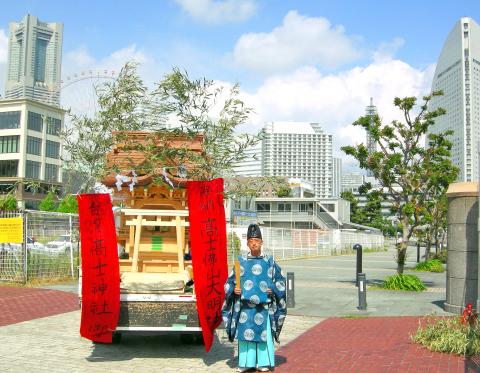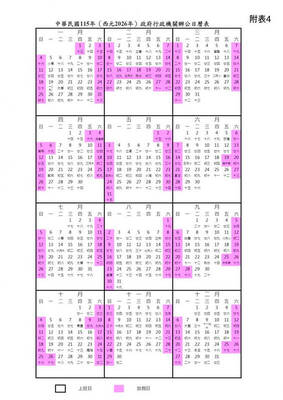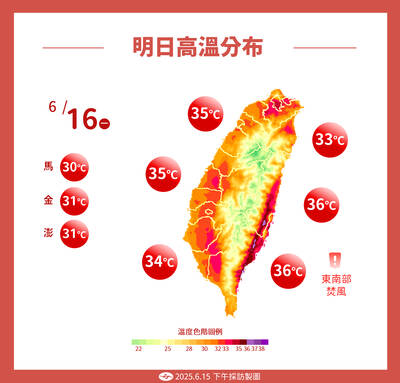In a show of gratitude to Taiwanese for their help during the 2011 Tohoku earthquake, a Japanese Shinto priest spent ¥10 million (US$80,475) and more than a year to build a Shinto shrine to replace a long-abandoned Japanese colonial-era shrine in Pingtung County.
Kenichi Sato, 44, comes from a long line of traditional builders of Shinto shrines and sacred architecture. He has visited Taiwan several times under the auspices of the Friends of Lee Teng-Hui Association — a group affiliated with former president Lee Teng-hui (李登輝).
In one of his trips, he became acquainted with Chen Ching-fu (陳清福), who was campaigning for the preservation of the shrine in Gaoshih Village (高士), Mudan Township (牡丹).

Photo: Chang Mao-sen, Taipei Times
When he learned that the local community was in dire need of professionals who specialize in shrine construction, Sato promised that he would do everything he could to build a new shrine.
Sato said he visited Taiwan several times to discuss the reconstruction work with local community members, including Chen, former Mudan Township warden Hua A-tsai (華阿財), Paiwan community leader Lee Wen-lai (李文來) and Gaoshih Village Warden Lee Te-fu (李德福).
It took Sato a year to build a miniature shrine — which is 230cm tall, 166cm wide and weighs 400kg — from cypress, with a copper gabled roof.
The shrine also has a decorative bargeboard that is carved into a triangular dormer on the undulating gable, he said.
Wearing a Shinto priest’s robe, Sato escorted the new shrine to the Port of Yokohama in Japan on May 18, where the structure was consigned to a Japanese transporter for shipping to Kaohsiung.
Sato said he personally bore the expense of shipment and all other costs incurred, including customs inspection and cargo loading, which amounted to about ¥500,000.
The shrine is expected to arrive in Kaohsiung and be installed at the site of a former Shinto shrine in the village early next month, he said.
“The friendship between Japan and Taiwan, and the kindness that Taiwanese showed to Japanese during the Tohoku earthquake in 2011 were what motivated me to do this,” he said. “Taiwan’s existence is also an important part of Japanese history.”
The gods of Paiwan Aborigines, rather than Japanese deities, are to be enshrined in the miniature he presented to the village, Sato said, adding that it is not a shrine of state religion, but a sacred structure dedicated to peace for the local community.
“[I] hope for greater peace for Taiwan and warmer Japan-Taiwan relations,” he said.

Taiwan is to have nine extended holidays next year, led by a nine-day Lunar New Year break, the Cabinet announced yesterday. The nine-day Lunar New Year holiday next year matches the length of this year’s holiday, which featured six extended holidays. The increase in extended holidays is due to the Act on the Implementation of Commemorative and Festival Holidays (紀念日及節日實施條例), which was passed early last month with support from the opposition Chinese Nationalist Party (KMT) and Taiwan People’s Party. Under the new act, the day before Lunar New Year’s Eve is also a national holiday, and Labor Day would no longer be limited

COMMITMENTS: The company had a relatively low renewable ratio at 56 percent and did not have any goal to achieve 100 percent renewable energy, the report said Pegatron Corp ranked the lowest among five major final assembly suppliers in progressing toward Apple Inc’s commitment to be 100 percent carbon neutral by 2030, a Greenpeace East Asia report said yesterday. While Apple has set the goal of using 100 percent renewable energy across its entire business, supply chain and product lifecycle by 2030, carbon emissions from electronics manufacturing are rising globally due to increased energy consumption, it said. Given that carbon emissions from its supply chain accounted for more than half of its total emissions last year, Greenpeace East Asia evaluated the green transition performance of Apple’s five largest final

Taiwan is to extend its visa-waiver program for Philippine passport holders for another year, starting on Aug. 1, Minister of Foreign Affairs Lin Chia-lung (林佳龍) said on Friday. Lin made the announcement during a reception in Taipei marking the 127th anniversary of Philippine independence and the 50th anniversary of the establishment of the Manila Economic and Cultural Office (MECO) in Taiwan, the Ministry of Foreign Affairs said. The decision reflected Taiwan’s commitment to deepening exchanges with the Philippines, the statement cited Lin as saying, adding that it was a key partner under the New Southbound Policy launched in 2016. Lin also expressed hope

Temperatures in New Taipei City’s Sindian District (新店) climbed past 37°C yesterday, as the Central Weather Administration (CWA) issued heat alerts for 16 municipalities, warning the public of intense heat expected across Taiwan. The hottest location in Taiwan was in Sindian, where the mercury reached 37.5°C at about 2pm, according to CWA data. Taipei’s Shilin District (士林) recorded a temperature of 37.4°C at noon, Taitung County’s Jinfeng Township (金峰) at 12:50 pm logged a temperature of 37.4°C and Miaoli County’s Toufen Township (頭份) reached 36.7°C at 11:40am, the CWA said. The weather agency yesterday issued a yellow level information notice for Taipei, New